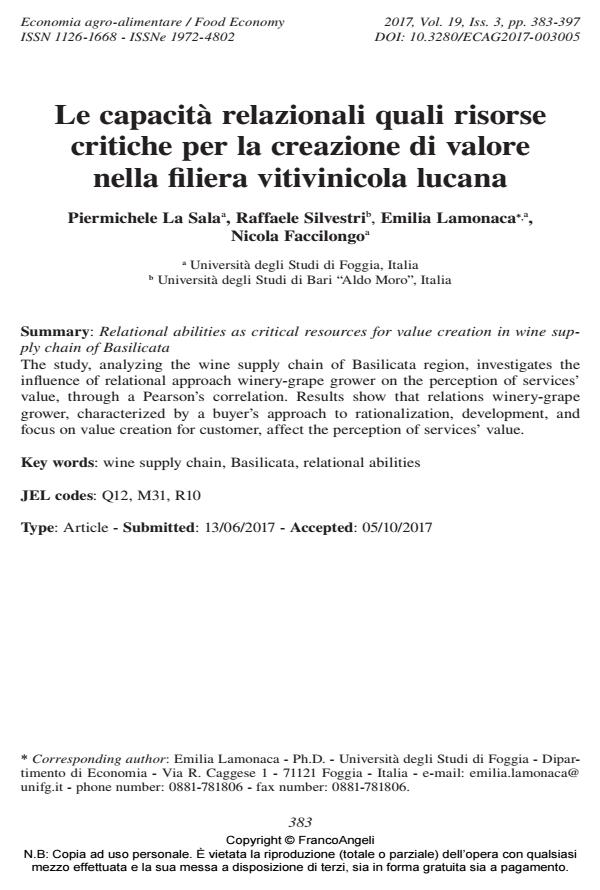Le capacità relazionali quali risorse critiche per la creazione di valore nella filiera vitivinicola lucana
Titolo Rivista ECONOMIA AGRO-ALIMENTARE
Autori/Curatori Piermichele La Sala, Raffaele Silvestri, Emilia Lamonaca, Nicola Faccilongo
Anno di pubblicazione 2017 Fascicolo 2017/3
Lingua Italiano Numero pagine 16 P. 383-398 Dimensione file 189 KB
DOI 10.3280/ECAG2017-003005
Il DOI è il codice a barre della proprietà intellettuale: per saperne di più
clicca qui
Qui sotto puoi vedere in anteprima la prima pagina di questo articolo.
Se questo articolo ti interessa, lo puoi acquistare (e scaricare in formato pdf) seguendo le facili indicazioni per acquistare il download credit. Acquista Download Credits per scaricare questo Articolo in formato PDF

FrancoAngeli è membro della Publishers International Linking Association, Inc (PILA)associazione indipendente e non profit per facilitare (attraverso i servizi tecnologici implementati da CrossRef.org) l’accesso degli studiosi ai contenuti digitali nelle pubblicazioni professionali e scientifiche
Relational abilities as critical resources for value creation in wine supply chain of Basilicata The study, analyzing the wine supply chain of Basilicata region, investigates the influence of relational approach winery-grape grower on the perception of services’ value, through a Pearson’s correlation. Results show that relations winery-grape grower, characterized by a buyer’s approach to rationalization, development, and focus on value creation for customer, affect the perception of services’ value.
Parole chiave:Wine supply chain, Basilicata, relational abilities
Jel codes:Q12, M31, R10
- Ecosystem for Successful Agriculture. Collaborative Approach as a Driver for Agricultural Development Nino Adamashvili, Mariantonietta Fiore, Francesco Contò, Piermichele La Sala, in European Countryside /2020 pp.242
DOI: 10.2478/euco-2020-0014
Piermichele La Sala, Raffaele Silvestri, Emilia Lamonaca, Nicola Faccilongo, Le capacità relazionali quali risorse critiche per la creazione di valore nella filiera vitivinicola lucana in "ECONOMIA AGRO-ALIMENTARE" 3/2017, pp 383-398, DOI: 10.3280/ECAG2017-003005